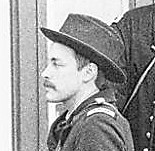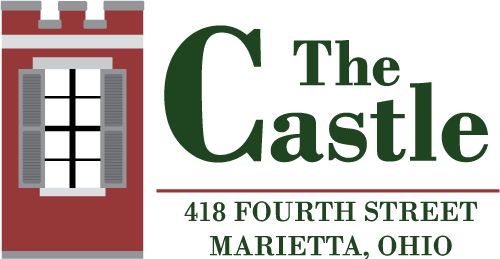
This next post in our “History at Home” series continues our staff recommendations regarding historical topics that you can explore and experience from your home. To learn more about this series and read our Executive Director’s recommendations, click here.
 Our second entry is from our Education Director, Kyle Yoho. Raised in Woodsfield, OH, Kyle graduated from Marietta College and earned his Masters in Public History from Wright State University. He’s been interested in history since junior high when he began studying the Civil War. Kyle joined The Castle team in 2015. His interests have grown to include the First World War and food history. Kyle has been a long-time living history interpreter, a skillset he has brought to many programs at The Castle.
Our second entry is from our Education Director, Kyle Yoho. Raised in Woodsfield, OH, Kyle graduated from Marietta College and earned his Masters in Public History from Wright State University. He’s been interested in history since junior high when he began studying the Civil War. Kyle joined The Castle team in 2015. His interests have grown to include the First World War and food history. Kyle has been a long-time living history interpreter, a skillset he has brought to many programs at The Castle.
If you decide to order any of the recommendations below online, please consider supporting us by selecting “Betsey Mills Corporation” in Amazon Smile. Thank you and happy reading!
History at Home: Recommendations from The Castle’s Education Director
America in World War I
*The Doughboys: America and the First World War by Gary Mead – This excellent narrative helps those unfamiliar with WWI develop an understanding of America’s role in this conflict.
*The Last of the Doughboys: The Forgotten Generation and Their Forgotten World War by Richard Reuben – This unique read illustrates the lives of men and women who served in this conflict; unique because those interviewed ranged from 101 – 113 years old.
*World War I: The American Soldier Experience by Jennifer Keene – This book is helpful for those interested in the soldier perspective.
*Doughboy War: The American Expeditionary Force in WWI edited by James Hallas – Not for the feint hearted, this compilation of soldier correspondence illustrates their experience from enlistment through their voyage home.
*Battles of the First World War Podcast by Mike Cunha – A detailed commentary on WWI’s campaigns.
*For Kids!* Finding Winnie: The True Story of the World’s Most Famous Bear by Lindsay Mattick – This family friendly read uncovers the origin story of Winnie the Pooh based in WWI.
Food History
Secondary Sources
*How America Eats: A Social History of U.S. Food and Culture by Jennifer Wallach – From Plimoth (spelled Plymouth today) to modern day, this book surveys the influences on today’s American cuisine.
*A Revolution in Eating: How the Quest for Food Shaped America by James McWilliams – This detailed narrative highlights food’s influences from early colonization in the Americas to the American Revolution.
*The Cooking Gene: A Journey Through African American Culinary History in the Old South by Michael Twitty – Through this revealing memoir, Michael Twitty uses his expertise as a culinary historian to provide a deep insight of slavery’s roots in southern cuisine through his journey to come to terms with his ancestry.
*97 Orchard: An Edible History of Five Immigrant Families in One New York Tenement by Jane Ziegelman – By the renowned Tenement Museum, this book explores the immigrant influence on American cuisine.
*For Kids* Independence Cake: A Revolutionary Confection Inspired by Amelia Simmons, Whose True History is Unfortunately Unknown by Deborah Hopkinson –This kids book explores the impact America’s first cookbook author had on American homes.
“Townsends” You Tube Channel – Episodes feature historical recipes made using historical cooking methods.
George Washington’s Mount Vernon Recipes – Recipes either related to the Washington family or from the era of their life on the estate.
Savor Podcast – Each episode of this podcast makes an in depth exploration of food history.
Primary Sources: These cookbooks exemplify the early changes in American cuisine over time
(Note: These can be found online, but for context and greater educational value pick up an edited version of these cookbooks.)
*American Cookery (1796) by Amelia Simmons; introduced by Karen Hess – This is the first American cookbook reflecting the inclusion of American ingredients cooked in an English manner.
*The Art of Cookery Made Plain and Easy (1805) by Mrs. Glasse; introduced by Karen Hess – While following the same vein as Amelia Simmons, this is more expansive.
*The Virginia Housewife (1824) by Mary Randolph; introduced by Karen Hess – Considered the first southern cookbook, it reflects not only English but Spanish, French, African, and Native American influences.
*The Kentucky Housewife (1839) – This is a classic early southern cookbook. It is an extensive recipe book originally written for economy of the household and easily accessible to new cooks.

